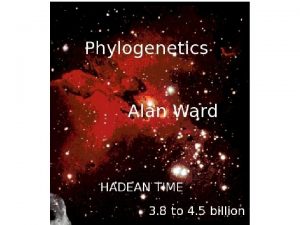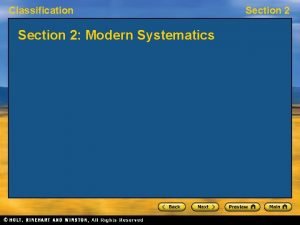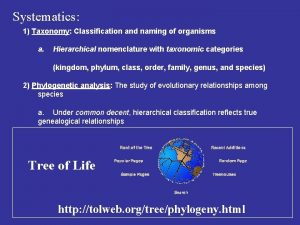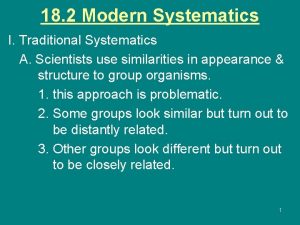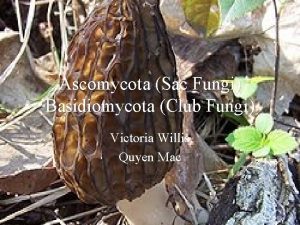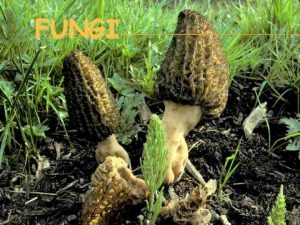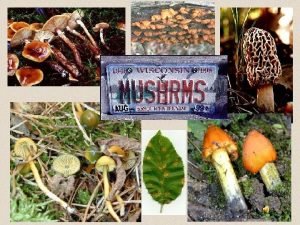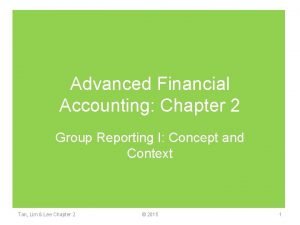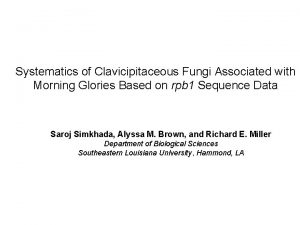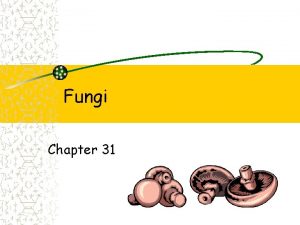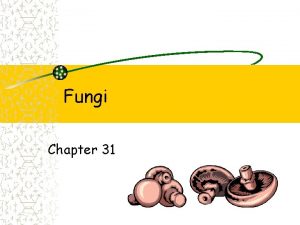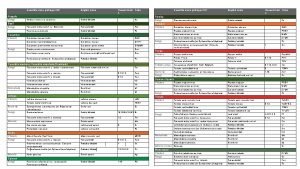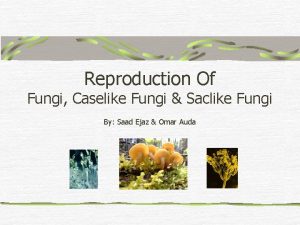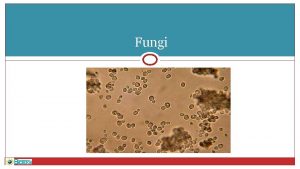Systematics of Clavicipitaceous Fungi Associated with Morning Glories



















- Slides: 19

Systematics of Clavicipitaceous Fungi Associated with Morning Glories Based on rpb 1 Sequence Data Saroj Simkhada, Alyssa M. Brown, and Richard E. Miller Department of Biological Sciences Southeastern Louisiana University, Hammond, LA

Grasses contain ergot-alkaloid producing Clavicipitaceous fungi Classification Kingdom: Fungi Division: Ascomycota Class: Sordariomycetes Order: Hypocreales Family: “Clavicipitaceae” Ergot alkaloids • Mycotoxin • Amine-based compound • Secondary metabolite • Biologically active alkaloids Epichloe on grass photo: David Kennard

Grasses contain ergot-alkaloid producing Clavicipitaceous fungi Advantage to grasses: • Decreased herbivory • Drought tolerance • Enhanced growth • Competitive ability

Periglandula Epiphytic fungi • New fungal genus of Clavicipitaceae • Symbionts with morning glory hosts Periglandula turbinae Host: Turbina corymbosa Periglandula ipomoeae Host: Ipomoea asarifolia Clavicipitaceae is not monophyletic • Animal pathogen and fungal parasites • Clavicipitaceae clades A, B, C • Plant-associated • Clavicipitaceae clade A

• Clavicipitaceae A, B, C • Nutritional mode shift • Clavicipitaceae A Grass endophytes

Research Objectives Objective 1 • Determine the placement of Periglandula associated with morning glories within the order Hypocreales using rpb 1 DNA sequence data. • Examine the pattern of nutritional mode shift with the addition of new Periglandula sequences. Objective 2 • Construct phylogeny estimating evolutionary relationships among Periglandula derived from different morning glory hosts • Determine whether Periglandula phylogeny: (a) follows plant host phylogeny, or (b) exhibits biogeographic pattern.

Methods to obtain new Periglandula sequence data: • Ergot-positive host morning glories were sampled. - chemical analysis (D. Pannicione) • Ergot-positive accessions grown in green house • DNA extraction using Qiagen DNeasy plant minikit • PCR using Periglandula specific primers rpb 1 gene region (developed by A. Brown) • PCR-based sequencing -- Beckman-Coulter Genomics

Methods: Objectives 1 – Placement of Periglandula within Hypocreales: Integrate new Periglandula sequences with examplar sample of published sequences for Hypocreales Redo the phylogenetic analyses with these new data Alignment • Automated alignment using Sate II Bayesian phylogenetic analyses • 45 taxa (528 sites) • 3 million generations used to reach convergence • burnin of 50, 000 generations removed • Standard deviation of split frequencies of 0. 0061 indicating convergence has been reached

Methods: Objective 2 – Molecular phylogenetics of Periglandula Phylogeny reconstruction of Periglandula sequence data using new results and one published sequence Alignment and Bayesian analysis similar to above

Objective 1: • Determine the placement of Periglandula associated with morning glories within the order Hypocreales using rpb 1 DNA sequence data. • Examine the pattern of nutritional mode shift with the addition of new Periglandula sequences.

Phylogeny of Hypocreales (adapted from Spatofora 2007) rpb 1 sequence data nutritional shifts noted Genus Periglandula • Fall in Clavicipitaceae clade A • Sister to grass associated fungi • Form a monophyletic group

Objective 2: • Construct phylogeny estimating evolutionary relationships among Periglandula derived from different morning glory hosts • Determine whether Periglandula phylogeny: (a) follows plant host phylogeny, or (b) exhibits biogeographic pattern

Periglandula Phylogeny • Periglandula turbinae distantly related • Periglandula from other related hosts are closely related • Clade resolved that included Periglandula from I. argillicola, I. pes-caprae, I. muelleri

Morning Glory Phylogeny Sample of Ipomoeeae Host species from study ITS sequence data Eserman & Miller, in prep. Adapted from larger Bayesian analysis Posterior probs. indicated colors correspond to host distributions on previous slide

Periglandula phylogeny essentially congruent with morning glory phylogeny Morning Glory Phylogeny

Periglandula phylogeny essentially congruent with biogeography (note phylogeny and biogeography are confounded) Morning Glory Phylogeny

RESEARCH OBJECTIVES Objective 1: • Determine the placement of Periglandula associated with morning glories within the order Hypocreales using rpb 1 DNA sequence data. Periglandula form a monophyletic group within the Hypocreales and within Clavicipitacea A, the plant-associated fungal clade • Examine the pattern of nutritional mode shift with the addition of new Periglandula sequences. Addition of Periglandula retains clade of plant-associated fungi

RESEARCH OBJECTIVES Objective 2: Reconstructed phylogeny estimating evolutionary relationships among Periglandula derived from different morning glory hosts • Determine whether Periglandula phylogeny: (a) follows plant host phylogeny, or (b) exhibits biogeographic pattern. Results supported both hypotheses. Further sampling needed from more host species from within Ipomoeeae to resolve competing hypotheses

References Spatafora J, Sung G, Sung J, Hywel-Jones N, White J. Phylogenetic evidence for an animal pathogen origin of ergot and the grass endophytes. Molecular Ecology. April 15, 2007; 16(8): 1701 -1711. Clay K. Fungal endophytes of grasses. Annual Review of Ecology and Systematics. 1990, 21, 275– 297.
 Let us celebrate the glories of our god
Let us celebrate the glories of our god Systematics deals with
Systematics deals with Systematics vs taxonomy
Systematics vs taxonomy Section 2 modern classification
Section 2 modern classification Systematics vs taxonomy
Systematics vs taxonomy Traditional systematics
Traditional systematics Club fungi phylum
Club fungi phylum General characteristics of fungi
General characteristics of fungi Club fungi are morels truffles bracket fungi yeast
Club fungi are morels truffles bracket fungi yeast Hello teacher good afternoon
Hello teacher good afternoon Good morning teacher good morning teacher
Good morning teacher good morning teacher No one loves me
No one loves me Class
Class Good morning teacher and class
Good morning teacher and class Glad to see you anton
Glad to see you anton Responses hello
Responses hello Morning bells are ringing
Morning bells are ringing Out group homogeneity
Out group homogeneity Psychodynamic approach psychology
Psychodynamic approach psychology One weakness associated with the entity theory is that
One weakness associated with the entity theory is that


